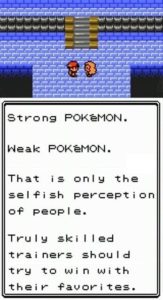The NEP 2020 aims to restructure the school education system by extending it to children under six
For the Indian state, kids are like Pokemon. Its education policy used to be “gotta catch ‘em all”. Now, as laid out in the National Education Policy 2020, the goal is “gotta catch ‘em young”. Because, as I explained in the first part of this series on the NEP, human beings are considered a resource that must be exploited for the development of the society.
But the profound truth of the matter can only be expressed thus:
In this second part of the series, we delve into the formative years of a citizen’s education, before they opt for higher education to get…I mean, do higher things.
The biggest change this NEP is bringing about is in the structure of schooling: it replaces the 10+2 structure with a 5+3+3+4 structure. It will be easier to explain with a graph that the policymakers have helpfully provided.
As is amply evident here, the government is seeking to expand the scope of school education to kids aged 3 to 6 as opposed to starting school at 6 years. Angandwadi, preschools and Balvatika will form the “foundational” part of the curricular structure, followed by preparatory (for ages 6-8), middle school (for ages 11-14), and finally secondary schooling (for ages 14-18).
But why did they change the academic structure?
Good question.
First, about the inclusion of younger kids in this structure. The policy talks about “Early Childhood Care and Education”, or ECCE, and a National Curricular and Pedagogical Framework for Early Childhood Care and Education which will be developed by the NCERT for kids under 6.
The idea is to create a framework that will serve as a guide to both parents and early childhood care and education institutions since 85 percent of a child’s cumulative brain development occurs prior to the age of 6. To add to the rationale behind “gotta catch ‘em young”, the committee led by K Kasturirangan which drafted the NEP says this:
“In terms of the growth of the national economy, it has been estimated that the development of a strong ECCE programme is among the very best investments that India could make, with an expected return of Rs 10 or more for every Rs 1 invested.”
The idea is to improve cognitive development and motor skills in children early in life and make them “school ready”. “In particular,” says the NEP document, “the numerous rich local traditions of India developed over millennia in ECCE involving art, stories, poetry, games, songs, and more, will also be suitably incorporated.”

Snark aside, one has to understand that this idea is not going to be easy to implement.
India has 16.45 crore children in the 0-6 age group, which is 13.59 percent of the total population. If the government’s intention is to include these kids in the education system, it is going to cost a lot of money. Plus, there is the immense challenge of finding preschool teachers who are trained to handle such young children, so a training module will need to be designed especially for the “foundational” part of the new schooling structure.
Further, the NEP presents a new approach that will involve “reduction of curriculum content in each subject to its core essentials, to make space for critical thinking and more holistic, inquiry-based, discovery-based, discussion-based, and analysis based learning”.
Back to amazing expressive adjectives and jargon.
“Classroom sessions will contain more fun, creative, collaborative, and exploratory activities for students for deeper and more experiential learning,” the NEP says. This sounds very nice but, again, every change in approach would require training and retraining teachers on a massive scale in order to do all of this fun holistic collaborative business.
Which brings us to teachers.
What does the policy say about teachers?
For the teachers, the NEP says the first priority is to fill teacher vacancies at the earliest, in a time-bound manner – especially in disadvantaged areas and areas with large pupil-to-teacher ratios or high rates of illiteracy.
The thing is, since education is on the concurrent list of the constitution, the actual task of recruitment is under the purview of state and union territory governments. All the central government can do is issue advisories to recruit faster and efficiently. As of November 2019, the data shows states have been doing a terrible job of it. Out of total sanctioned vacancies of 9,14,771 teachers across India, 2,13,608 are vacant – which means 23 percent of all sanctioned vacancies in government schools have not been filled.
So yeah, almost a fourth of classrooms in our country look like this.
On top of it, the NEP says “special attention will be given to employing local teachers or those with familiarity with local languages”. More on the languages in a bit, but overall states will have to be proactive on multiple levels when it comes to recruiting and training teachers.
The policy talks about maintaining a pupil-teacher ratio of under 30:1 and, in case of socio-economically disadvantaged students, the aim is to get it down to 25:1. One interesting thing mentioned in the NEP is that “teachers could be recruited to a school or school complex and the sharing of teachers across schools could be considered in accordance with the grouping-of-schools adopted by State/UT governments”. Which makes you think: this is such a no-brainer solution to temporarily resolving the vacancy problem, why didn’t the government come up with this before?
It will be interesting to see how this teacher-sharing system works out on the ground and whether state governments will put in the effort to make it efficient.
What does the policy say about instruction language?
Ah, yes, the forever prickly issue of #imposition. There were fears that this NEP would become one big excuse for the current government to impose Hindi on hapless kids across the country, turning it into a “link language”. Are these fears justified?
Simple answer: Nope.
The policy, in reality, respects the diversity of India and doesn’t mention Hindi as a primary or a link language. Instead, the NEP says:
Wherever possible, the medium of instruction until at least Grade 5, but preferably till Grade 8 and beyond, will be the home language/mother tongue/local language/regional language.
Both public and private schools will follow this. The central government has stated that high-quality textbooks will be made available in home languages/mother tongue and that efforts will be made to ensure that any gaps between spoken language and the medium of teaching are bridged. In case textbooks are not available in mother tongue, then the NEP leaves it to the teacher to instruct the child in the mother tongue wherever possible.
It says that every student will “participate in a fun project/activity” where “students will learn about the remarkable unity of most of the major Indian languages”. So far so good, I say. Schools will also “widely” offer courses on indigenous languages (Tamil, Telugu, Kannada, Malayalam, Odia, Pali, Persian, and Prakrit) and foreign languages (Korean, Japanese, Thai, French, German, Spanish, Portuguese, and Russian). There is no mention of Mandarin though…of course.
All in all, the policy steers clear of any language-related controversy. Clearly, they don’t want to get into a political fight over language of instruction in schools. But here, it bears repeating, this policy is just laying out a general vision and the actual laws and regulations will follow.
There are a few more things that we must keep an eye on, especially when it comes to regulations and lawmaking. There is a clear emphasis in the policy on “traditional knowledge”.

Keep an eye on the narratives
On the subject of being “traditional”, NEP says:
Indian Knowledge Systems, including tribal knowledge and indigenous and traditional ways of learning, will be covered. Specific courses in tribal ethno-medicinal practices, forest management, traditional (organic) crop cultivation, natural farming, etc. will also be made available.
Traditional Indian values and all basic human and Constitutional values (such as seva, ahimsa, swachchhata, satya, nishkam karma, shanti, sacrifice, tolerance, diversity, pluralism, righteous conduct, gender sensitivity, respect for elders, respect for all people and their inherent capabilities regardless of background, respect for environment, helpfulness, courtesy, patience, forgiveness, empathy, compassion, patriotism, democratic outlook, integrity, responsibility, justice, liberty, equality, and fraternity) will be developed in all students.
Students will be taught at a young age the importance of “doing what’s right”, and will be given a logical framework for making ethical decisions.
So much #sanskaar in one go. Is it just me or does that last part sound a wee bit tricky. Let’s get ethical?
And then, there’s that kicker of a sentence that just exists. So, you might as well know about it.
All curriculum and pedagogy, from the foundational stage onwards, will be redesigned to be strongly rooted in the Indian and local context.
Woof. I can hear Pushpak Vimanas and Flying Homeopathic Ambulances coming towards us from a distance. Maybe I’m being paranoid, but it’s important to flag that the NEP specifically states that the course material will be redesigned to make it more “Indian”.
Perhaps, we will only know what that means once they start the redesigning process and come up with the new material.
Anna Priyadarshini helped research this report.
www.newslaundry.com





